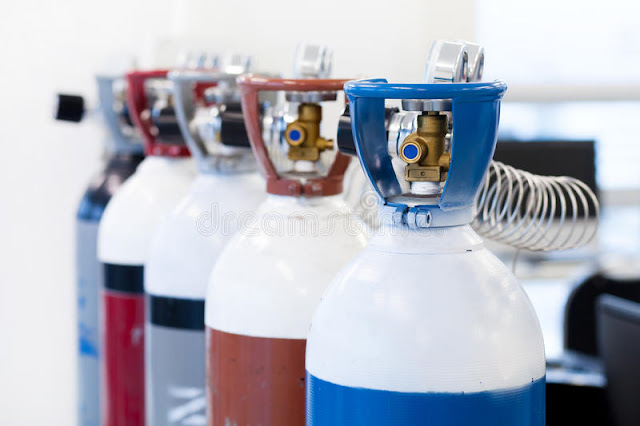Type 4 Composite CNG Cylinders Manufacturers: Major Requirements
Cost Reduction Through Intelligent Material Selection.
Plastic liners offer the opportunity for a substantial reduction in cost from Type 3 aluminum-lined composite cylinders. Common plastic liners of HDPE, HDPE, and polyamide (nylon) are much less expensive than seamless aluminum or steel liners. Carbon fiber laminates, the most popular choice for strength and weight, account for about 65% of the total construction cost. Reinforcement method and intelligent strategies for fiber selection allow the cost of CNG Cylinders Manufacturers to be reduced. Nice design helps in reducing the cost and weight of CNG tanks overall.
Biggest Difficulty: Attaching The Metal Neck To The Plastic Liner.
Metal neck and end pieces are used to counteract the
excessive force of internal pressure against the valve. The hardest part of a
Type 4 cylinder is creating a perfect seal to hold the gases under high
pressure, extreme temperatures and demanding service conditions. Lincoln, Ullit
and a few others form a high-strength adhesive bond between the plastic and the
metal during the molding process. Most other CNG
Cylinders Manufacturers use some sort of mechanical compression method
using an O-ring seal or similar material.
Composite Laminate: Must Design For Damage Protection
Carbon/epoxy composites have excellent burst strength but
are relatively fragile. Some form of additional protection is needed to improve
damage resistance from fire and extreme heat, impact, abrasion, etc. Lincoln
Composites use their ToughShell® security system; A combination of a
carbon/glass hybrid combined with a foam and glass/epoxy outer shell. Other
manufacturers use a combination of rubber end caps with some additional
external fibers.
Plastic Liners Have To Be Permeable And Withstand Temperature Extremes.
The plastic formulation and wall thickness must be selected to withstand gas penetration through the walls of the liner. Automobile gasoline tanks, for example, often use multi-layer laminated HDPE to prevent gasoline fume permeation at ordinary atmospheric pressure. HDPE storing CNG at 250 bar (3600 psi) pressure must have the proper thickness to prevent gas seepage. Additionally, the plastic must be able to withstand the temperature extremes of the oven curing the composite over wrap and also the extremely low temperatures from quickly draining the cylinder. The temperature of a Type 4 CNG cylinder can drop from 20C to -50C when the CNG is depleted from 250 bar to 0 quickly. Extremely cold temperatures are a major challenge for almost any plastic.
Successful CNG Cylinders Manufacturers with an extreme commitment to safety and quality combine innovation. Many manufacturers of Type 4 composite CNG cylinders have started failed and disappeared. Successful Gas Cylinders Manufacturers in India use innovation and expert engineering strategies to design highly safety features with efficient, high quality manufacturing. For example, Lincoln Composite makes use of a number of outstanding design features that - to other company managers - often seem too expensive and overly cautious. However, Lincoln's commitment and hard work paid off. We are MKC Group most longest lasting and successful CNG Cylinders Manufacturers of Type 4 composite cylinders. Lincoln's success comes from his excellent engineering and management.






Comments
Post a Comment